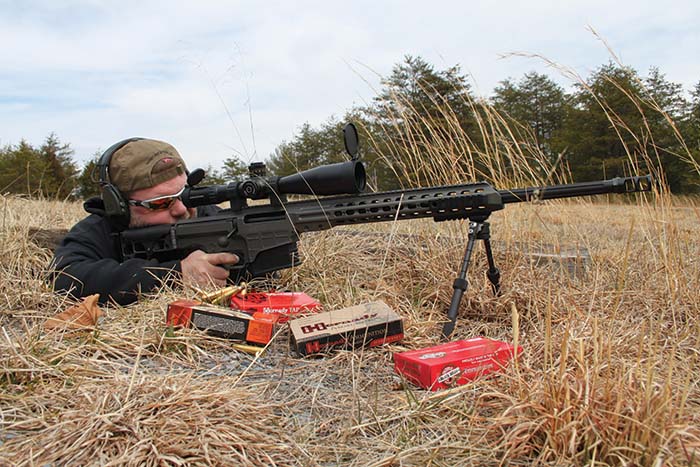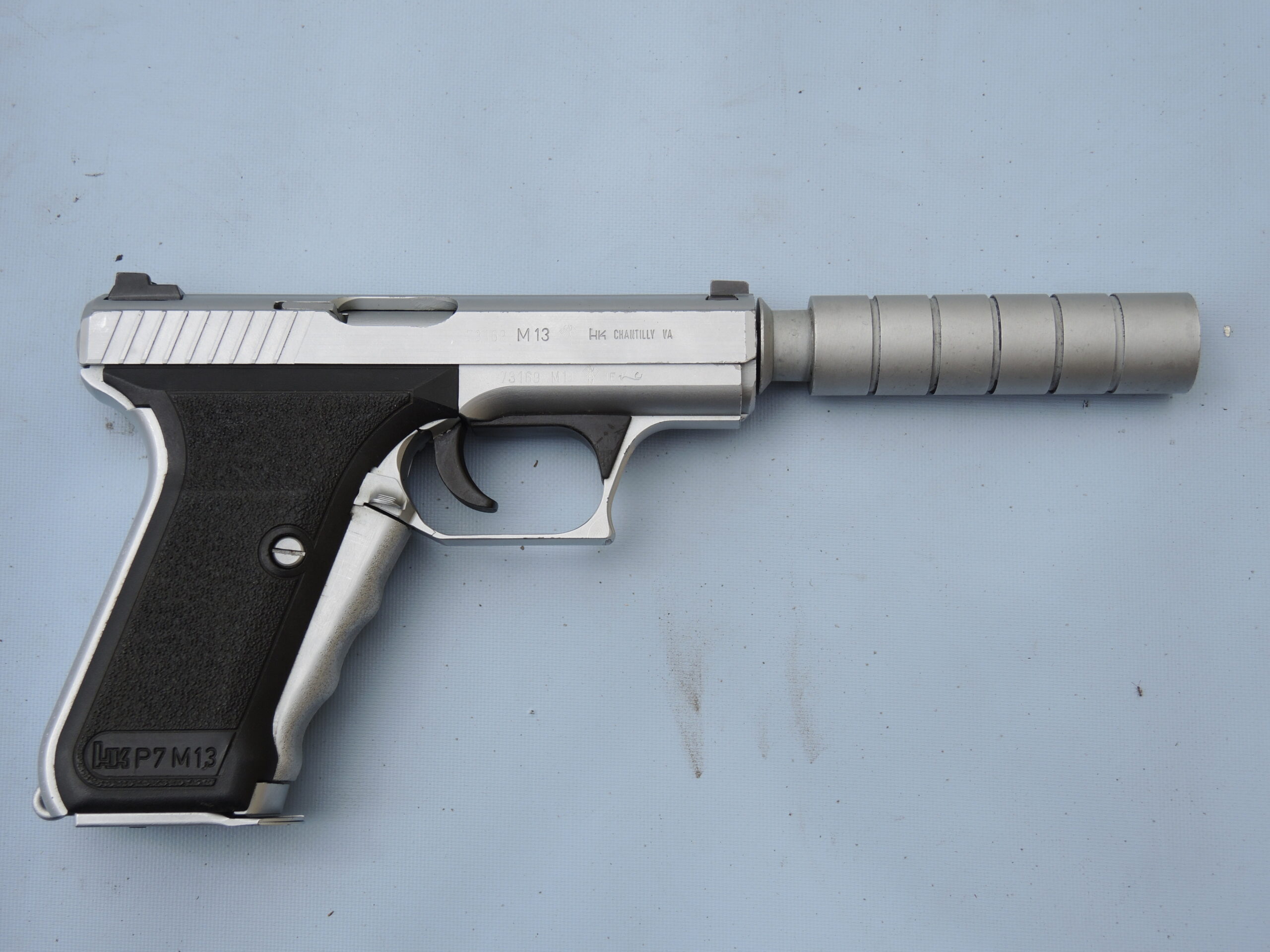By Todd Burgreen –
Barrett is known for its innovative approaches in designing rifles. Much of this stems from Barrett’s non-typical background for a firearms firm. Its first product, the semiautomatic M82 .50 BMG typifies this approach. Barrett Firearms Manufacturing, based in Murfreesboro, Tennessee was founded in 1982 and centered on Ronnie Barrett’s idea of a shoulder-fired .50 BMG rifle. Barrett’s first conventional military success was the sale of about 100 M82A1 rifles to the Swedish Army in 1989. World events then transpired to give Barrett a major impetus towards success in 1990, when the United States armed forces purchased significant numbers of the M82A1 during operations Desert Shield and Desert Storm in Kuwait and Iraq. About 125 rifles were initially bought by the United States Marine Corps, and orders from the Army and Air Force soon followed. The success of the Barrett .50 BMG rifles allowed for Barrett to expand its product line to include AR and precision bolt action rifles.
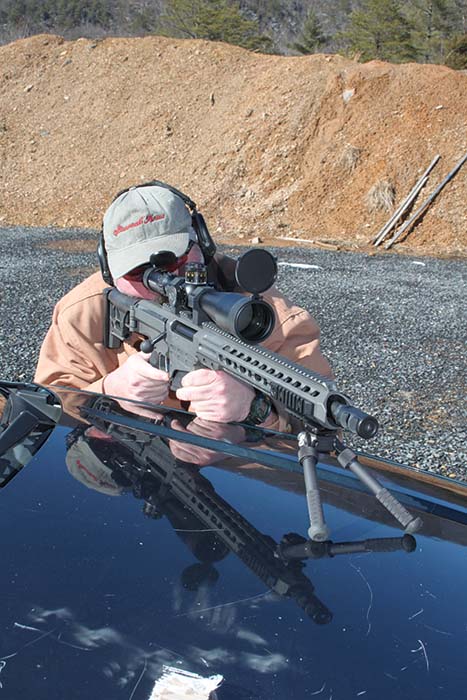
The Ronnie Barrett saga of one man’s vision coming to represent a whole new class of weapon that harnessed the brute power of the Browning .50 caliber round is a thing of legend. Many are familiar with the Barrett story thanks to several documentaries and articles that have been featured since 1982. Ronnie was a professional photographer and artist who wanted to create a shoulder fired rifle chambered in .50 BMG. He had no prior experience in manufacturing or as an engineer. He hand-drew the design for what was to become the Barrett semiautomatic .50 BMG rifle. When he took those drawings to machine shops in the area they laughed at his ideas. Instead of giving up, he decided to manufacturer his idea himself. This same attitude has carried through to other Barrett products. Ronnie Barrett’s “amateur” boldness in bucking the norm by challenging conventional thinking; his dogged refusal to accept no as an answer believing his product was a better answer was eventually rewarded both in terms of worldwide military procurement and recognition by his peers.
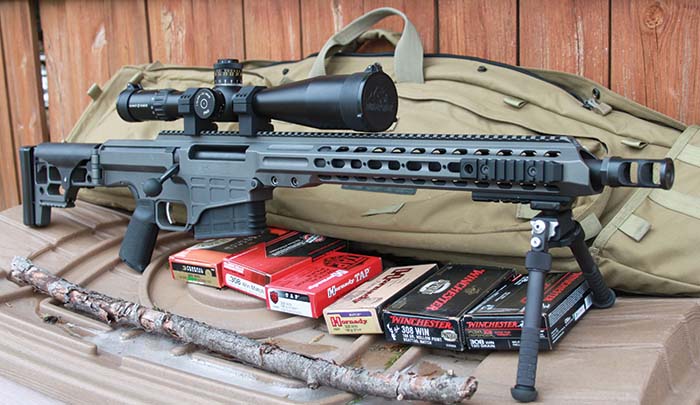
The focus of this article will be on the Barrett MRAD – Multi-Role Adaptive Design. The MRAD was initially introduced chambered in .338 Lapua in response to the United States Special Operations Command’s (USSOCOM) solicitation for a new long range anti-personnel rifle. One of the main objectives of the USSOCOM PSR (Precision Sniper Rifle) specifications is caliber modularity; providing military snipers with the capability to change calibers without armorer support. This shows through in the Barrett MRAD. While it would seem a sniper would always use the most powerful long range cartridge, the truth is many training venues and budgets do not allow full time use of expensive .338 Lapua ammunition. A removable barrel also provides the tactical operator the advantage of carrying the MRAD in components, thus reducing the package size during transport. The .338 Lapua is the obvious main cartridge that the USSOCOM specifications were built around. However, the military is also interested in maximizing logistics of using current cartridges such as the .308Win/7.62 NATO and .300 WinMag as well as allowing operators to choose cartridges that best suit their needs. Allowing snipers to swap to .308Win/7.62 NATO or .300WinMag saves precious resources while still satisfying mission requirements. If ammunition resupply becomes a problem in a combat theater, snipers can count on the availability of various .308Win/7.62NATO ammunition compared to .338 Lapua or even .300 WinMag. As a footnote to this, the ability to use .308 Win, and to a lesser degree .300 WinMag, will find favor with law enforcement agencies.
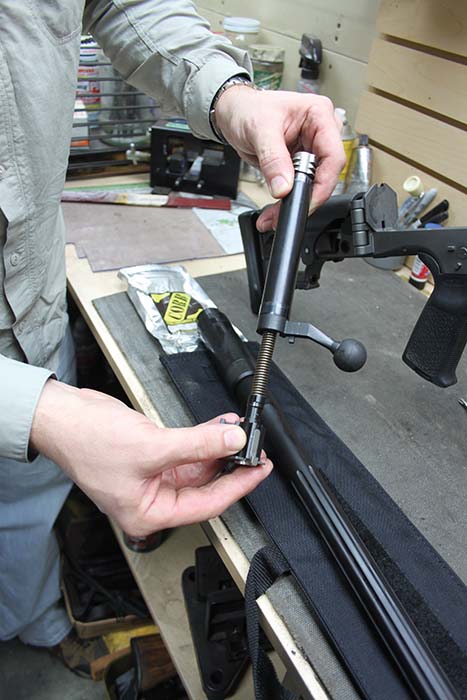
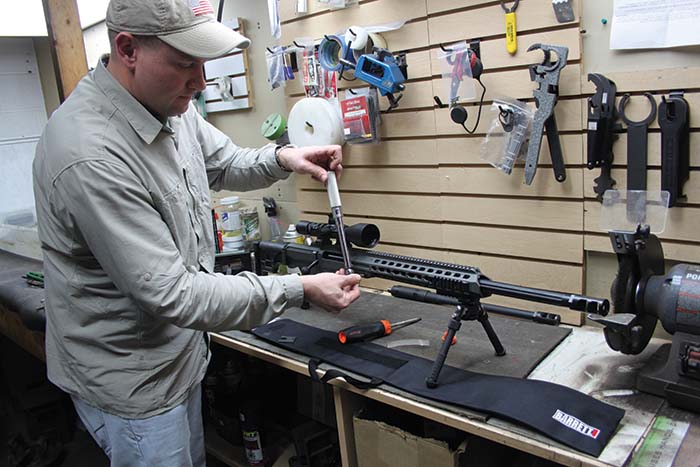
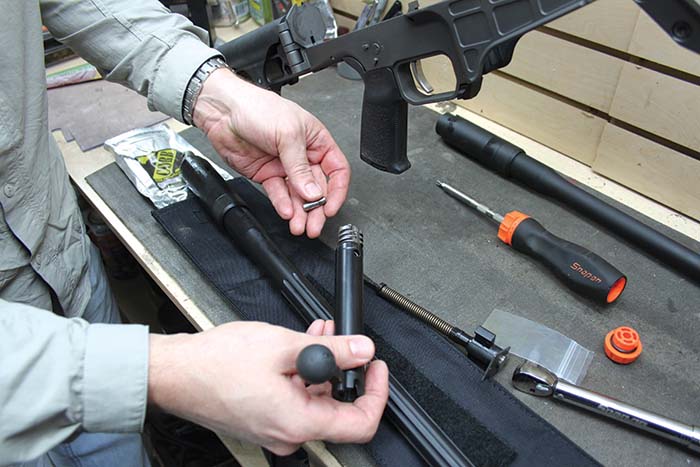
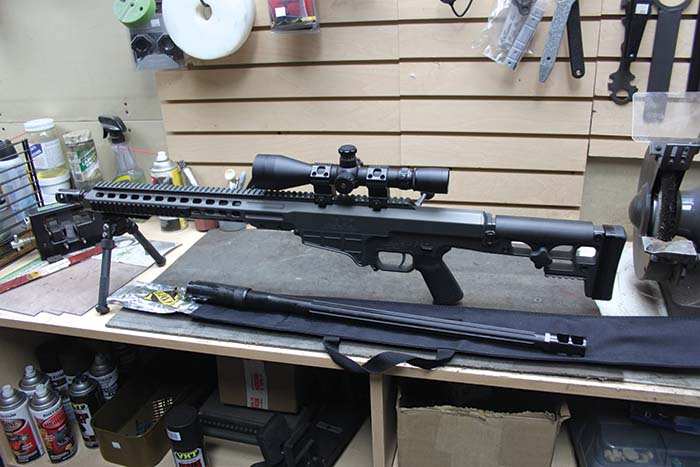
The Barrett MRAD represents the cutting edge of rifle technology combining many innovative patent pending features with time proven accuracy producing enhancements. The MRAD’s distinctive aesthetics immediately puts one on notice that this is not an ordinary rifle. With the MRAD, Barrett has created very accurate modular long range rifle. Barrett’s instincts for how to create a minimalist design while retaining the ability to change barrels and accommodate mission specific accessories is the key to its performance success. Just like the AR platform, the Barrett MRAD is comprised of an “upper” and a “lower” section. The MRAD’s upper is a monolithic rail system with a free floated barrel inside. As previously mentioned, the Barrett MRAD is configured to accept multiple calibers with a simple barrel and bolt change. The MRAD’s mission flexibility will be on display in this article by featuring the .308 Win and .300 WinMag chamberings. Time spent with Jeff Burch, the Barrett Director U.S. Commercial Sales really brought home the simple genius of the MRAD design. Jeff demonstrated the barrel change procedure with the MRAD. The procedure is instinctual and easily accomplished afield with only rudimentary tools needed that are easily carried in a drag bag or other gear.
The .308 Win MRAD features a 1:10 RH twist 17 inch fluted barrel and functions with a 10-round detachable double stack magazine. The .300 WinMag barrel measures 24 inches and is also fed via 10-round detachable magazine. Further listing of MRAD dimensions includes an overall length of nearly 42 inches with the .308 Win and 49 inches with the longer .300 WinMag barrel. The folding stock reduces length by nearly 9 inches. Weight is around 13 pounds. An integral 30 MOA Picatinny scope rail is ready to accept a myriad of optics and other accessories. The MRAD upper receiver forend rail system can accept additional rail sections for mounting of night vision devices, laser designators, and anything else a user would need to fulfill a mission. The MRAD’s bolt is encased in a polymer sleeve that adds lubricity and makes cycling the action almost effortless. The Barrett MRAD had no problems keeping scope reticle relatively stable when functioning the bolt even when firing multiple rounds in relatively rapid fashion; a compliment to its design and smoothness of the bolt. There is a “hitch” felt at the top of the bolt handle lift before it starts its rearward path. Once accustomed to this characteristic it did not hinder bolt manipulation. The Barrett MRAD has a familiar AR type pistol grip and safety lever. The rear stock is multi-adjustable in terms of length of pull and comb height. The modular Barrett adjustable trigger arrived set for 3 pounds.
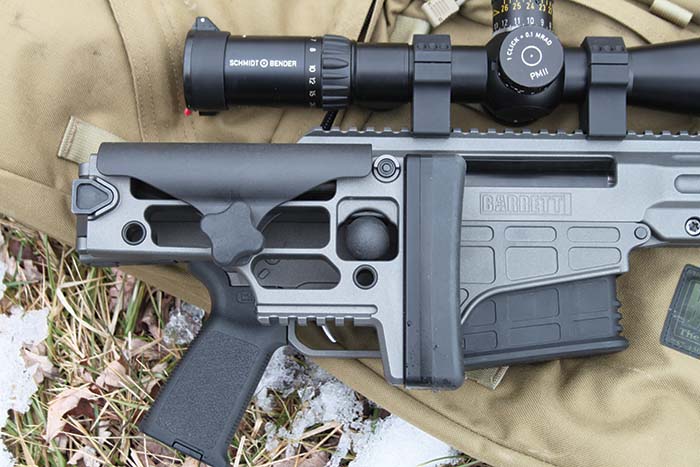
A tactical rifle weapon system is made up of rifle/optics/ammunition/shooter. For this evaluation a Schmidt & Bender 5-25x56mm PM II with H2 CMR reticle was mounted on the MRAD via AWP rings. In the past few years, Schmidt & Bender (S&B) has made a couple of powerful statements by winning two of the most prestigious U.S. military optic contracts. Most recently, S&B was chosen to provide the optic for the U.S. Precision Sniper Rifle (PSR) contract that the Barrett MRAD was created to contend for. Schmidt & Bender will be supplying its 5-25×56 PM II scope in a special PSR version to U.S. Army, Navy, Air Force and Marine Special Forces for existing and future sniper rifles. The Schmidt & Bender optic is expected to serve and perform all over the world under widely varying and harsh environmental conditions; albeit under water, near coastlines, in arctic surroundings, in the jungle and last, but not least, in urban warfare. Another milestone that established Schmidt & Bender as a major player in the tactical optic market was the S&B 3-12×50 PM II model being chosen for use by the U.S. Marines on their sniper rifles. This was after two years of comprehensive testing by the U.S. Marines against twenty five rival scope types.
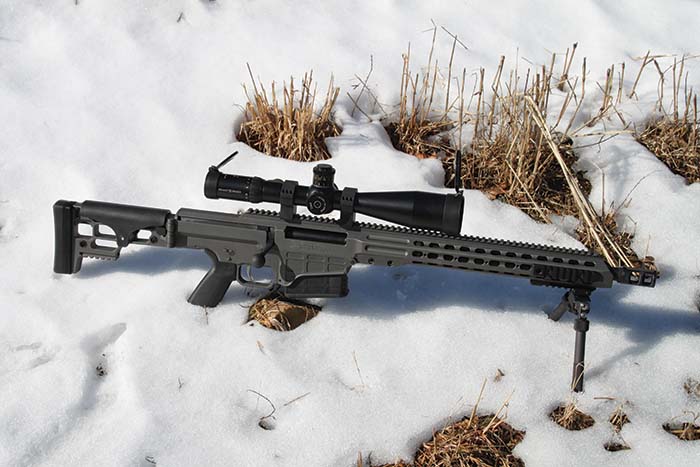
The first requirement of a tactical precision rifle is accuracy. Testing consisted of .300 WinMag Black Hills Match 190gr BTHP, Federal Premium 190gr Sierra Matchking, and Hornady 178gr A-Max TAP loadings. The same brands were used in the .308 Win portion of evaluation along with Winchester. The Black Hills .308 Win Match loads tested consisted of 168 grain and 175 grain Match bullets. The Federal .308 Win chambering was the venerable 168 grain Match load. 168 grain TAP from Hornady along with Winchester 168 grain Match was also used. The thought process is simple; if these loads do not produce accuracy nothing will. Prior use of these loads backs-up this belief. The Barrett MRAD shot all the premium loads tested into 1MOA or better at 100 yards; mostly better with 5/8” groups not untypical. This statement covers both the .300 WinMag and .308 Win chamberings. The bench testing was done off a Champion tripod front rest and rear sand bag. The accuracy figures are based on firing three five-round groups and averaging group sizes. Not a lot of time was spent at the 100 yard range. 300 yards and out is the more indicative test of a weapon system like the Barrett MRAD. This generates useful ballistic information for the shooter, especially when it comes to elevation and windage data for log books and ballistic calculations. Accuracy out to three hundred yards was sub-MOA and it was the shooter who ruined the sub-MOA potential at the 600 yard targets. The Barrett MRAD was tested over an extended time period constantly producing sub-MOA groups with several different ammunition brands – an important logistic consideration. Another sign of an accurate, dependable rifle is how cold bore zeros compare over time and if the point of aim shifts after a few rounds heat up the barrel. The Barrett MRAD showed no shifts in point of aim and cold bore zeros produced fine groups when overlaid together.
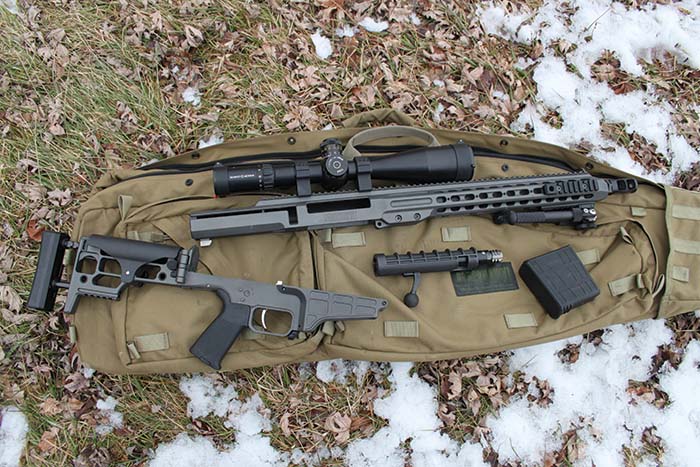
The MRAD’s relatively light weight for a precision rifle at 13 pounds translates into a weapon that can be carried afield without fatiguing the user and is easier to adapt to non-standard firing positions even offhand if needed. Tactical rifles weighing significantly more than the Barrett MRAD have been handled. While accurate from a fixed prone position, all were challenging to shoot in any other position besides prone, even if employing shooting sticks or other means of support. The 17 inch and 24 inch barrels are a solid compromise balancing weight, performance, and field handling for the precision marksman. The MRAD had no problems with shifting points of aim even when firing 10 aimed rounds in relatively rapid fashion. Let’s face it, the majority tactical precision rifle scenarios will not require this many rounds fired during one mission or call out, especially for law enforcement.

After testing innate accuracy from the bench, field tests were performed at Echo Valley Training Center. This consisted of shooting prone off a bi-pod or pack. The MRAD’s stock configuration is unique to say the least. After firing over 450 combined rounds of .308 Win and .300 WinMag, the MRAD’s ergonomics, especially firing from the prone position, came to be fully appreciated. The buttstock is fully adjustable for length of pull; further tweaking can be accomplished with the cheek piece, which can be raised or lowered per individual preference. The Barrett MRAD’s smooth bolt manipulation became evident on the range when having to quickly correct hold point based on spotter’s feedback and re-engage any missed target. The MRAD’s ease of manipulation aids a shooter chambering a fresh round with minimal head disturbance. This enables a fast, accurate follow-up shot on a target not anchored with the first shot or another separate aiming point if a shooter is in a target-rich environment. The ten-round magazine capacity is also valued in target rich environments. This is where all of the MRAD’s technological innovation pays off for the law enforcement or military sniper deployed in the field. Extremely accurate range rifles do not always translate into effective tactical rifles due to durability issues that arise when taken afield. The MRAD was tested during various range conditions and subjected to course conditions made familiar by training at Storm Mountain Training Center. An operator will quickly overcome any preconceived notions about the MRAD based upon appearance once it is utilized in the field or training operations. The MRAD’s advantages in accuracy and ergonomics will quickly become apparent. Any department or individual contemplating a new tactical rifle would do well to consider the MRAD – not only for what it offers in performance, but also the advantage of having Barrett as a company backing it in terms of service, parts and accessories.
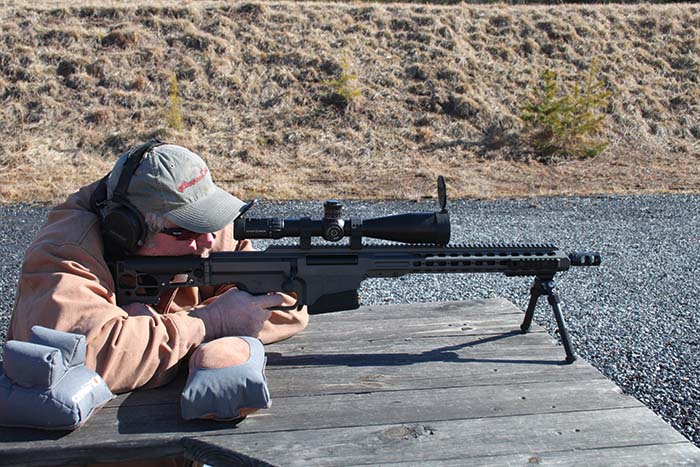
Orientation and intimate familiarity with a weapon such as the Barrett MRAD is a must for shooter and rifle to achieve full potential. The modularity of the MRAD comes in very handy in this aspect of being able to convert to .308 Win/7.62 NATO, .300 WinMag and .338 Lapua. In fact, for most missions, especially in the law enforcement realm, the .308 Win chambered MRAD is more than suitable for sniping/tactical applications. The Barrett MRAD .338 Lapua is best thought of as a specialized platform when needing to extend range beyond 1,000 yards. The .308 Win still allows the trained marksman a ballistic advantage, especially when combined with the MRAD’s gilt edge long range accuracy. The .300 WinMag chambering in the Barrett MRAD fills the gap between the .308 Win and .338 Lapua with many feeling it is the optimum chambering by offering extra horsepower compared to the .308 Win without the blast and recoil of the .338 Lapua. The key thing to remember with the Barrett MRAD is that you have a choice and flexibility to adapt to specific mission profiles.
Sites of Interest
Barrett Manufacturing Inc.
P.O. Box 1077
Murfreesboro, TN 37133
(615) 896-2938
www.barrett.net
Schmidt & Bender USA Inc.
Service Center
(703) 953-1253
www.schmidtundbender.de
Echo Valley Training Center
www.echovalleytrainingcenter.com
Black Hills Ammunition
PO Box 3090
Rapid City, SD 57709
(605) 348-5150
www.black-hills.com
Hornady Mfg. Inc.
3625 Old Potash Hwy
Grand Island, NE 68802
(800) 338-3220
www.hornady.com
ATK/Federal Cartridge Company
900 Ehlen Drive
Anoka, MN 55303
(800) 322-2342
www.federalpremium.com
Winchester Ammunition
427 N. Shamrock St
East Alton, IL 62024
www.winchester.com
| This article first appeared in Small Arms Review V19N2 (March 2015) |



